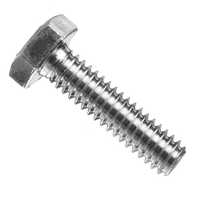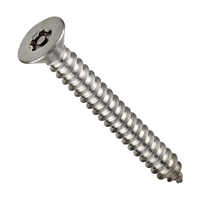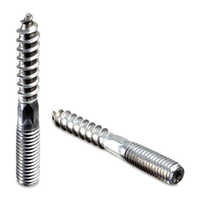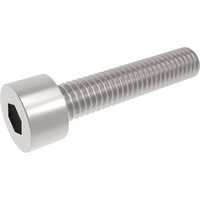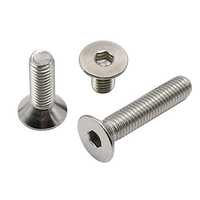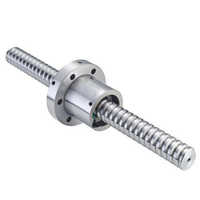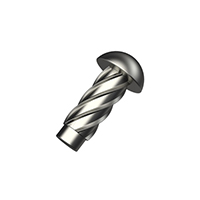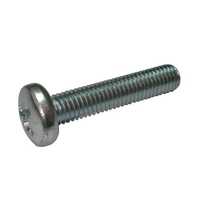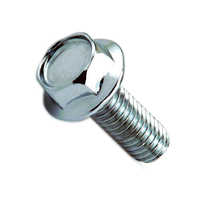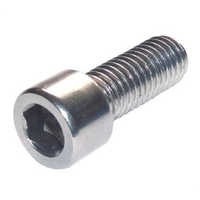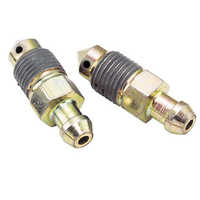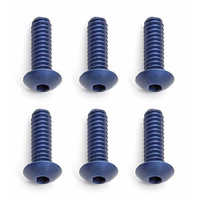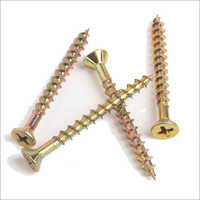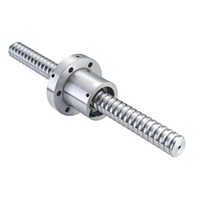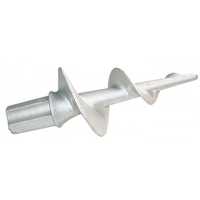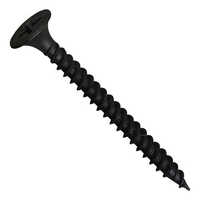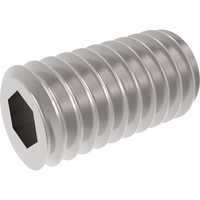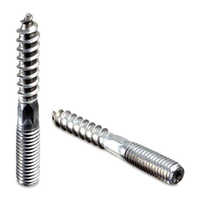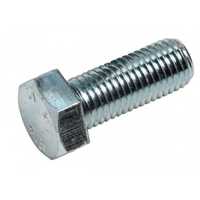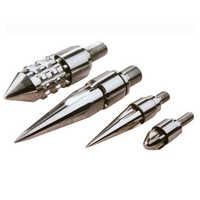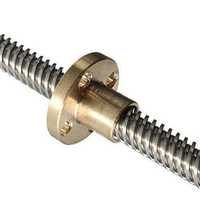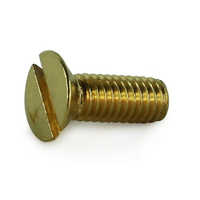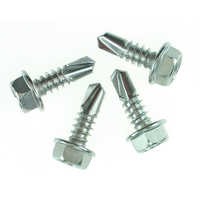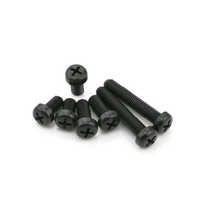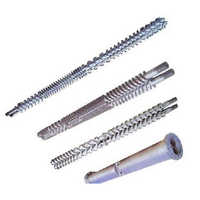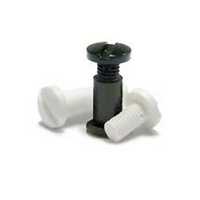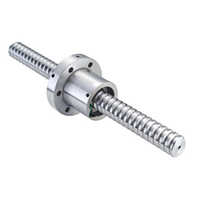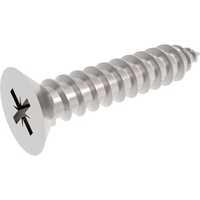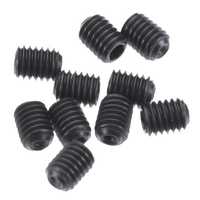Screws
(20202 products)
Top Screws Categories
Explore More Categories
Made in India
Carbon Steel Drywall Screw
MOQ- 500 Kilograms/Kilograms
13 Years
Associated Industrial Stores
Made in India
Polished Industrial Machine Screw
MOQ- 5000 Piece/Pieces
Length - 1.5-160 Millimeter (mm)
Size - 10-22 Mm
Weight - 10-50 Grams (g)
7 Years
Precision Fast Tech India
Wood Screws
Price Trend: 160.00 - 190.00 INR (Approx.)/Kilograms
MOQ - 20 Kilograms/Kilograms
22 Years
Business Type: Manufacturer | Supplier
NIKO STEEL AND ENGINEERING LLP
Made in India
Plastic Blue Screw Cap With Red Ptfe Preslit Septa
Price: 600.00 INR (Approx.)/Pack
MOQ - 10 Pack/Packs
Size - 2ml
Product Type - HPLC Vial, Caps, Septa
Color - Blue
3 Years
Business Type: Manufacturer | Distributor
CHROMATOGRAPHY WORLD
Made in India
Best Price Metal Screw
4 Years
Response Rate: 94.44%
Business Type: Manufacturer | Distributor
SHYAM METALS & ALLOYS
Indian Inquiries Only
Made in India
Multicolor Roofing Screws
Price Trend: 2.50 - 10.50 INR (Approx.)/Number
MOQ - 1000 Number
Usage - Industrial
Color - Multicolor
Quality Level - High
10 Years
Business Type: Manufacturer | Distributor
SHRI BALAJI ROOFING
Indian Inquiries Only
Made in India
Brass Energy Meter Sealing Screws
19 Years
Business Type: Manufacturer | Exporter
PRIME INDUSTRIAL COMPONENTS LLP
Made in India
Grub Screws
11 Years
Business Type: Manufacturer | Supplier
INDER INDUSTRIES
Made in India
Polished Industrial Sems Screw
Price Trend: 10.00 - 100.00 INR (Approx.)/Piece
MOQ - 5000 Piece/Pieces
Weight - 10-50 Grams (g)
Size - 10-22 Mm
Color - Golden
7 Years
Business Type: Manufacturer | Supplier
PRECISION FAST TECH INDIA
Made in India
Stainless Steel Screws Application: Engineering
Price Trend: 10.00 - 100.00 INR (Approx.)/Piece
MOQ - 400 Piece/Pieces
Size - M6-M8-M10-M12-M16-M20
Weight - 10-12 Grams (g)
Color - Silver
12 Years
Business Type: Manufacturer | Distributor
KETAN ENGINEERING CO
HALDER FULCRUM SCREW
Price Trend: 1000.00 - 10000.00 INR (Approx.)/Piece
MOQ - 1 Piece/Pieces
12 Years
Business Type: Distributor
VICTOR ENTERPRISE
Indian Inquiries Only
Made in India
Silver Crab Grip Gypsum Board Screw
Price: 150 INR (Approx.)/Piece
MOQ - 300 Piece/Pieces
Color - Silver
Product Type - Crab Grip Gypsum Board Screw
Size - 13-100mm
1 Years
Business Type: Manufacturer | Exporter
BOLD INCORPORATION
Made in India
Auger Screw
4 Years
Response Rate: 94.59%
Business Type: Manufacturer | Service Provider
SANSHA PACKAGING MACHINERY
Made in India
Plated Drywall Screw
Price Trend: 1.63 - 3.00 INR (Approx.)/Piece
MOQ - 10000 Piece/Pieces
Usage - Industrial use
Size - Available in different sizes
Product Type - Drywall Screw
6 Years
Response Rate: 74.36%
Business Type: Distributor | Exporter
NANDIKA FASTENERS
Silver Shoulder Screw
Price: 10 INR (Approx.)/Piece
MOQ - 500 Piece/Pieces
Surface Treatment - Galvanized
Size - M4 to M20
Product Type - Shoulder Screw
7 Years
Business Type: Manufacturer | Supplier
VINAY ENGINEERING COMPANY
Made in India
Carbon Steel Screw Plugs
Product Type - Carbon Steel Screw Plugs
Usage - Industrial
Color - Black
6 Years
Business Type: Manufacturer | Distributor
VE TO CLAMPING SYSTEMS PRIVATE LIMITED
Made in India
Single Screw Extruder, Power Source: Electric
6 Years
Business Type: Manufacturer | Distributor
VITAL FORCE ENGINEERING
Stainless Steel Self Screws
Price Trend: 1.50 - 10.00 INR (Approx.)/Piece
MOQ - 1000 Piece/Pieces
Product Type - Self Screws
Material - Stainless Steel
17 Years
Business Type: Manufacturer | Supplier
KIRTI STEEL INDUSTRIES
Made in India
Phillip Head Screw
7 Years
Business Type: Manufacturer | Supplier
A. V. FASTNERS PVT. LTD.
Indian Inquiries Only
Made in India
Dry Wall Screws
Price Trend: 120.00 - 150.00 INR (Approx.)/Kilograms
MOQ - 1000 Kilograms/Kilograms
13 Years
Business Type: Manufacturer
ASSOCIATED INDUSTRIAL STORES
Made in India
Silver Bugle Head Black Dry Wall Screw
Price: 319 INR (Approx.)/Box
MOQ - 20 Box/Boxes
Product Type - Dr wall Screw
Usage - All
Color - Black
6 Years
Business Type: Manufacturer | Distributor
RATNAKAR RATNAMANI INDUSTRIES
Made in India
Galvanized Machine Screw
Price: 4 INR (Approx.)/Piece
MOQ - 100 Piece/Pieces
Usage - Industrial
Size - Customized
Material - Stainless Steel
4 Years
Business Type: Manufacturer | Trading Company
MVD FASTENERS PRIVATE LIMITED
Brass Fine Finish Copper Screw
Material - Brass
16 Years
Business Type: Manufacturer | Exporter
ZENITH INDUSTRIES
Made in India
24301 Support For Screw
2 Years
Business Type: Manufacturer | Exporter
MAHI EXPORTERS
Made in India
Packaging Auger Screw - Material: Ss
Price: 5000 INR (Approx.)/Piece
MOQ - 1 Piece/Pieces
Product Type - Machine Parts
Material - SS
Surface Treatment - Other, Polished
5 Years
Business Type: Manufacturer | Supplier
AARTI STEEL ENTERPRISE
SDST Sheet Screw
4 Years
Business Type: Manufacturer | Distributor
AMI STRUCTURES PRIVATE LIMITED
Indian Inquiries Only
Made in India
Golden Edm Conductive Copper Screw
Price: 600 INR (Approx.)/Piece
MOQ - 100 Piece/Pieces
Product Type - EDM Conductive Copper Screw
Color - Golden
Usage - Industrial
1 Years
Business Type: Manufacturer | Distributor
THAKUR JI MACHINE AND TOOLS
Made in India
Wood Screws
3 Years
Business Type: Exporter | Trading Company
AIRA TREX SOLUTIONS INDIA PRIVATE LIMITED
Verified Exporter
( Accepts only Foreign Inquiry)
Stainless Steel Sbc Ball Screws
Price: 4500 INR (Approx.)/Piece
MOQ - 1 Piece/Pieces
Material - Stainless Steel
3 Years
Business Type: Manufacturer | Supplier
Z-TORK AUTOMATION CO
Made in India
Silver X Slide With Ball Screw
Price: 15000 INR (Approx.)/Piece
MOQ - 1 Piece/Pieces
Product Type - X Slide With Ball Screw
Color - Silver
Size - Thickness - 10-15 Mm
2 Years
Business Type: Manufacturer | Trading Company
Saiprasad Enterprises
Indian Inquiries Only
Screws Manufacturers | Suppliers in India
| Company Name | Location | Member Since |
|---|---|---|
| Niko Steel And Engineering Llp | Mumbai, India | 22 Years |
| Prime Industrial Components Llp | Jamnagar, India | 19 Years |
| Kirti Steel Industries | Mumbai, India | 17 Years |
| Zenith Industries | Jamnagar, India | 16 Years |
| Associated Industrial Stores | Howrah, India | 13 Years |
| Ketan Engineering Co | Mumbai, India | 12 Years |
| Victor Enterprise | Mumbai, India | 12 Years |
| Inder Industries | Jalandhar, India | 11 Years |
| Shri Balaji Roofing | Vadodara, India | 10 Years |
| Precision Fast Tech India | Jamnagar, India | 7 Years |
Screws
Introducton
Any mechanical fastening with holes and the ability to be screwed into some other item is commonly referred to as a screw.
Screws having a tapered shaft and sharp threads, such wood screws and self-topping screws, are in this category because they are designed to cut a matching thread in the part to which they are fastened. There are also machine screws, which look like bolts but have a threaded axis all the way through the shaft.
The distinct between bolts and nuts can be based on their function. These definitions indicate that a bolt is a variety of fasteners that is used to connect two unthreaded parts together, whereas a screw is different fastener that is used to secure two threaded parts together.
The literal application of this term is rarely seen in everyday life. Typically, when people refer to a fastener, they have in mind something that isn't self-tapping and has merely a portion of its shaft threaded. Fasteners with a threaded shank or a self-tapping head are commonly referred to as screws.
Sometimes the only thing keeping a screw in place is the friction it generates in the threads. Self-tapping screws experience this friction due primarily to the radial expansion of the hole.
When torque is given to the head, tension is created in the screw, and the parts are compressed, resulting in axial force, which is the primary cause of friction in machine screws. To prevent loosening, machine screws can be secured with a locking nut or thread-locking adhesive.
Different Types of Screws
Here is a long list of screws that can be purchased from any number of sources, from factories to hardware stores.
1. Wood Screws
Wood screws are designed to penetrate wood, but they are versatile enough to be utilised in a variety of other materials that are easily bent. In most cases, they have a countersunk head and a flat head.
2. Wing screw
Wing screws are various fasteners that may be manually tightened or loosened depending on the user's needs. These Screws, which are also known as wing thumb screws, have projections that look like wings and constitute the head of the screw.
They offer leverage for the thumb and forefinger when twisting the screw.The heads of wing screws are flanged, which makes it possible to manually tighten them.
3. Thumb screw
The thumbscrew is a type of torture device that was initially utilised in early modern Europe. It is a straightforward vice, which may or may not feature studs that project from the internal surfaces.
Because of their large diameter and knurled heads, thumb screws may be torqued by hand. This makes them convenient for use in tight spaces.
4. Sheet metal screw
Sheet metal screws are utilised for the purpose of either affixing two pieces of sheet metal to one another or connecting sheet metal to other varieties of metal, such as tubing.
The heads of these screws are normally round, but they can also be flat or even have a hex shape. Keep in mind that sheet metal screws are of the thread-cutting type, which is an important distinction to make.
The extremely fine thread on heat metal screws enables quick and simple installation of the screws into wood or fibreglass.
5. Set screw
Set screws are threaded rod segments that do not have heads and sit flush with the material that is being pierced. The most usual application for them is in conjunction with shaft collars, although they can also be used to grasp an axis in a manner that is perpendicular to the shaft. They are fastened in place using flat heads or recessed sockets.
6. Self -drilling screw
The shank of a self-drilling screw looks similar to a drill bit, and it allows the screw to create a pretapped hole before the threads contact. Aside from that, they look like screws for sheet metal.
The use of self-drilling screws is extremely versatile, and they may be put to use in a wide range of applications that need the joining of two distinct kinds of materials. It is usual practise to use them to attach metal to wood, and sometimes even metal to metal.
7. Particleboard screw
The screws used to attach particle board have a full length thread. Because of its length, the thread obtains a larger engagement and has a higher pull-out strength. Specifically developed for use with composite timbers such as laminated particle board, craftwood, or MDF.
Cabinet manufacturers and those who work in business and residential joinery use these.Particle board screws are extremely comparable to dry-wall screws, although they are noticeably smaller and lighter as a consequence of having a lower load capacity.
8. Mirror screw
Mirror screws are used in combination with mirrors, as their name would imply given their purpose. In most cases, they are made out of a material that is not abrasive, is light, and has a chrome finish.
The most secure method for attaching mirrors to any wall is to use mirror screws. They provide a lovely, secure, and robust mounting solution for vanity mirrors, mirrors, access panels, and splashbacks when they are used conjunction with mirrored screw caps.
9. Machine screw
Machine screws are designed to be used in conjunction with a pretapped hole in order to fasten two pieces of metal work together. The entire length of the shank is threaded, and they typically have a countersink on the end of the shank.
10. Cap screw
Cap screws often have a shoulder that is fairly wide and are designed to grip an object securely, although their bodies may not be threaded the entire length of the screw. They are designed to be put into tapped holes and come with a choice of head types that you may choose from.
Where are Screws Used?
When two or more pieces of wood or metal need to be joined, screws can do the job.There are so many things that can be done with screws.
- To attach two pieces of wood together, screws are a staple of any beginner's toolkit.
- They serve as connectors between various machine components and can be found in numerous industries including electronics, engineering, and manufacturing.
- They serve as fasteners for a variety of sheet metal applications. Sheet metal screws are used to fasten many materials to sheet metal, including wood, plastic, and other metals.
- Quickly drilling into metal or wood is another common purpose. screws are also suitable for use as thread cutters in machines. However, they can be organised in a wide variety of ways, making them particularly well-suited for applications in the building and manufacturing industries.
- They're utilised to bind metal and wood together. Structures including ports, bridges, buildings, and roads typically make use of these. The low pitch of the steel threads makes them ideal for usage indoors.
- They are used to join heavy lumber or other materials that must support a lot of pressure. Commonly, the screws are significantly heavier than what you'd find in a typical wood screw.
- The majority of screw usage occurs in the transportation, manufacturing, maritime, construction, homeware, and aerospace sectors.
- In addition to that, it can be utilised with colour charts, swatch books, catalogues, fabric swatch books, albums, and a variety of other things. If you use grommets or hangers to hang the pattern book, it will be much easier for you to keep it organised and tidy.
- They are versatile enough to be employed in locations where external dampening fasteners are not desired.
- In addition, things can be held together or against one another with the help of screws. A gear or pulley, for instance, can be maintained on a shaft with the assistance of a set screw.
- There are many different kinds of screws that can be used to tighten not just the nut but also the other two pieces. Prior to the popularity of hex bolts, square head screws were the industry norm.
How are Screws Manufactured?
The process of making a screw is outlined below.
1. Raw material
The raw material for nearly all screws is either a solid piece of metal called bar stock or a spool of metal wire. Smaller sizes employ spooled wire because it is more manageable and can be fed constantly into a machine, whereas much bigger sizes require screws to be cut from solid bar.
Wire is oiled and heated to make it more pliable, and then it is put into a straightening machine to remove any kinks or bends.
After the wire has been straightened and cut to length, a series of dies are used to progressively punch an outline of the screw head form, and a chamfer is created at the screw's tip.
2. Drive Cutting
The method used to create a screw drive is determined by the type of head and drive being used. In the case of some drives and driveless head designs, this process is redundant as it is carried out during the cold forming stage. The groove for both standard slotted drives and certain Phillips drives is cut in a separate step.
3. Thread Rolling
After that, the blanks are put into thread-rolling dies, which can take a few different shapes depending on the type of screw being made.
The most common technique, called reciprocating die rolling, involves subjecting the screw to immense pressure over two flat dies, each of which is held in place.
Hundreds of screws may be manufactured in a minute using this method, which imprints the thread onto the screw. When compared to machine-cut screws, rolled screws are much more aesthetically pleasing, durable, efficient, and quick to manufacture.
4. Thread Cutting
Cutting the shank and then the threads from bar stock material can be a more cost-effective method of producing custom fasteners, especially for lower volume orders.
The threads produced using this method are typically 30% weaker than those produced using the rolled method, however this approach is worthwhile to consider for producing small batches of custom screws.
The use of high-precision lathes for the branding of fasteners with minute patterns and logos is another intriguing prospect made possible by this method.
Screws, in this instance, are likely absolutely essential. When two or more pieces of wood or metal need to be joined, screws can do the job. When compared to regular nails, screws are much more reliable in terms of holding force. The seal they create is likewise more secure. Moreover, they are simpler to remove than nails.
FAQs: Screws
Q. Best Screws Manufacturers and Suppliers in India?
Ans: The best manufacturers and suppliers of screws in India are Screw Expert India, Akshar Trader, and Super Screw.
Q. How to Select Screws?
Ans: Make sure the screw will go through at least half the thickness of the bottom material before you choose it.
Q. How do I measure screw size?
Ans: To figure out how big screws and bolts are, you measure the distance from one side's outer thread to the other side's outer thread.
Q. Is a #6 or #10 screw bigger?
Ans: Yes, the number tells you how big the screw is. In contrast to nails and wire, screw diameter decreases as gage number decreases.
Q. What are screws used for?
Ans: Screws are typically used for two purposes: holding things together and setting things in place. When driving a screw into wood, the ridges on the screw require a screwdriver to be spun in a circular motion.
Q. What is a screw made of?
Ans: Brass, Stainless steel, titanium, and a plethora of other metals are all viable options for manufacturing screws and fasteners.
Q. Why are screws called screws?
Ans: Guards, wardens, and Prison Warders are other names of screws. Modern French "écrou," pronounced a-crew, defines the nut of a bolt and is unquestionably the etymon of the English word screw, which derives from Middle French "escroe," pronounced "escrow." It was first documented in use in English about the year 1400.
Q. What are 5 different types of screws?
Ans: Here are the 5 most common types of Screw:
-Sheet Metal Screw
- Lag Screw
- Wood Screw
- Structural Screw
- Security Screw
Related Topic:
Top 10 Screws Manufacturers, Suppliers & Exporters in India
Related Categories
Abrasives
Acoustic Products
Acrylic Sheets
Air Blowers
Air Compressors & Air Separation Plants
Air Cooler
Air Dryers
Air Receiver
Air Valves
Aluminum Castings
Anchors
Anti Vibration Mounts
Ball & Roller Bearings
Ball Valves
Ballast Making Machines
Bearing Parts & Components
Bearings
Bellows & Expansion Joints
Belt Pulleys
Boilers, Components & Spares
Bolts
Bright Bars
Bristles
Burners/Industrial Burners & Incinerators
Bushings & Bushing Parts
Butterfly Valves
CNC Machined Components
Cable Pulleys
Capital Goods
Carbon & Graphite Products
Castor Wheels
Centrifugal Pumps
Centrifuges
Ceramics
Chains & Chain Link Fence Fittings
Cleaning Equipment
Clips, Clamps
Coils
Combustion Equipment
Compression Springs
Compressors & Allied Equipment
Control Valves
Conveyor & Conveyor/Industrial Belts
Cooling Tower & Chilling Plants
Corrosion Protection Materials
Coupling
Cranes
Cryogenic Equipment
Cutting Tools, Broaches & Cutters
Departmental Shelving
Diaphragm Valves
Die Castings
Dies & Moulds
Dies,Jigs,Fixtures
Diesel Engine & Electric Locomotive Spares
Draught Fan
EOT Cranes
Electric Hoists
Electric Motors & Engines
Electroplating Chemicals & Equipment
Elevators, Lifts & Escalators
Energy Management System
Engine Valves
Engineering Goods & Equipment
Engineering Plastics
Engraving Equipment
Extruded Profiles
Fasteners
Fiberglass Products
Filter Cartridges & Media
Filter Cloth, Filter Industrial
Filters-Air, Gas, Liquid
Filtration & Sedimentation Units
Flat Metal Processing Equipment
Float Valves
Fork Lift Truck Parts
Fork Lift Trucks
Forklifts
Foundry Raw Material & Equipment
Furnace Manufacturers
Galvanized Fasteners
Gantry Cranes
Gaskets
Gate Valves
Gauges & Gauge Glasses
Gear Boxes, Reduction Gears & Gear Cutting
Girder Cranes
Glass & Glass Products
Glass Cutting Tools/Glass Cutters
Globe Valves
Goliath Cranes
Grating
Hand & Allied Tools
Hand Pump
Hardware & Tools
Heat Exchangers
Heating Elements
Hex Bolts
Hex Nuts
Hooks & Mounts
Hoses
Hot Air Oven
Humidification & Ventilation Equipment
Hydraulic Hoses & Flexible Metal
Hydraulic Press
Hydraulic Press Brakes
Hydraulic Products & Equipment
Hydraulic Valves
Induction Heating Equipment
Industrial Automation
Industrial Brakes
Industrial Brushes
Industrial Clothing
Industrial Clutches
Industrial Cylinders
Industrial Dryers
Industrial Evaporators
Industrial Knives
Industrial Nets
Industrial Ovens
Industrial Rollers
Industrial Supplies Stocks
Industrial Supplies-General
Industrial Tape
Industrial Tools
Industrial Valves
Industrial Vibrator
Inspection Equipment
Instrumentation
Internal Combustion Engine
Jib Cranes
Laboratory Furniture
Laboratory Glassware & Equipment
Laundry Equipment
Lined Valves
Machine Tools Accessories
Marking Systems
Material Handling Equipment
Measuring Tools & Equipment
Mechanical Seals
Metallised Capacitor Films
Mining Equipment
Mining, Exploration & Drilling Machinery
Model Making Materials
Motor Couplings
Moulded Components
Moulds
Needle Valves
Needles
Nuts
Oil Seals
Outdoor Cooling Systems
Overhead Cranes
PVC Hoses
PVC Products
Paint Brushes
Painting Equipments & Maintenance
Perforated Sheets
Plastic Processing Machinery Parts
Plastic Valves
Plastic Welding Equipment
Plate Valves
Plug Valves
Pneumatic Products & Tools
Pneumatic Valves
Polish & Polishing Material/Machinery
Power Press
Precision Brass Components
Pressed Components
Pressure Gauges
Pressure Vessels
Pulleys
Pulverizers
Pump Spares Parts
Pumps & Pumping Equipment
Radiators
Refrigeration & Equipment
Rope Pulleys
Rope,Twines & Webbings
Ropes
Rotary Valves
Rubber & Rubber Products
Rubber Gaskets
Rubber Roller
Rubber Seals
Rubber Transmission Belts
Screws
Seals
Sensors & Transducers
Shaft Couplings
Shafts & Shaft Collars
Sheet Metal Components & Parts
Solenoid Valves
Springs
Stainless Steel Bolts
Stainless Steel Fasteners
Stainless Steel Nuts
Stainless Steel Valves
Storage Systems
Storage Tanks
Submersible Pumps
Surface Finishing Equipment
Synthetic Industrial Diamonds
Testing & Measuring Equipment
Thermostatic Bimetals & Thermostats
Trolleys & Carts
Tungsten Carbide
Ultrasonic Equipment
V-Belts
Vacuum Equipment & System
Valves
Valves Fittings
Vibrating Screen
Washers
Water Coolers
Weighbridge
Welding & Soldering Supplies
Welding Electrodes
Welding Equipment
Winches
Wire Drawing Dies
Wire Rope Hoists
Wire Ropes
